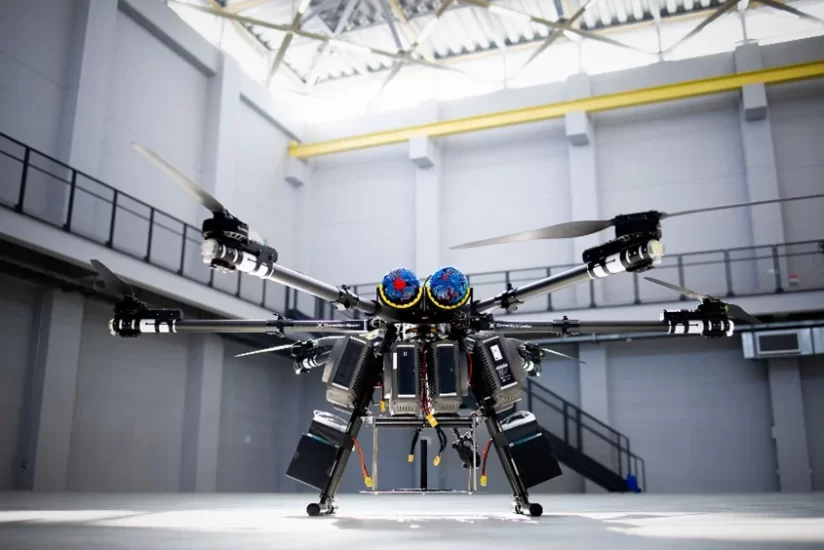Okuma Drone Co., Ltd. has announced that it has completed the Fukushima Prefecture’s Regional Revitalization Practical Development Promotion Project, which it was awarded in 2020.
Since the Fukushima Daiichi Nuclear Power Plant disaster, decontamination work has been underway with the aim of repatriating residents and rebuilding their lives. Previous manual surveys have been time-consuming due largely to the risk of radiation exposure for workers.
In February, Okuma Drone and DroneWorkSystem conducted a 3D mapping automatic survey experiment in Okuma Town in the Futaba District of Fukushima Prefecture. Using multiple drones equipped with special cameras, operators successfully photographed residential lots and buildings in the specified residential area and automatically surveyed and tallied the walls of houses. The Build Flyer drone manufactured by Ishikawa Energy Research incorporates a SONY α6400 camera and Pix4D 3D mapping software.
Okuma Drone has completed the development of automatic navigation management software for multiple drones. This software makes it possible to autonomously navigate multiple drones using a single software to meet the needs of simultaneous flight of multiple drones, such as equipment inspection, construction surveying, and farm pesticide spraying, which was previously difficult. In this demonstration, the company prepared aircraft from multiple manufacturers that can be connected to Okuma Drone’s automatic navigation management software, registered flight plans, and verified whether multiple aircraft could execute the plan from takeoff to landing with a single button.
Okuma Drone is also collaborating with DroneWorkSystem Co., Ltd. to develop hydrogen-fuelled drones for automated long-distance and heavy cargo transportation as well as an operation management system for multiple aircraft. The companies are developing a “carbon-neutral aircraft” using a drone powered by hydrogen fuel cells with a 40kg payload. A hybrid specification option features a LiPo battery as an auxiliary device. Based on the results obtained from tests already carried out this year, the companies aim to achieve a 15 minute flight time for a 40kg payload, and expect the system to be used for transporting heavy objects in mountainous areas and providing relief supplies during disasters.
For more information
Image: hybrid drone equipped with hydrogen fuel cell + Lipo battery




